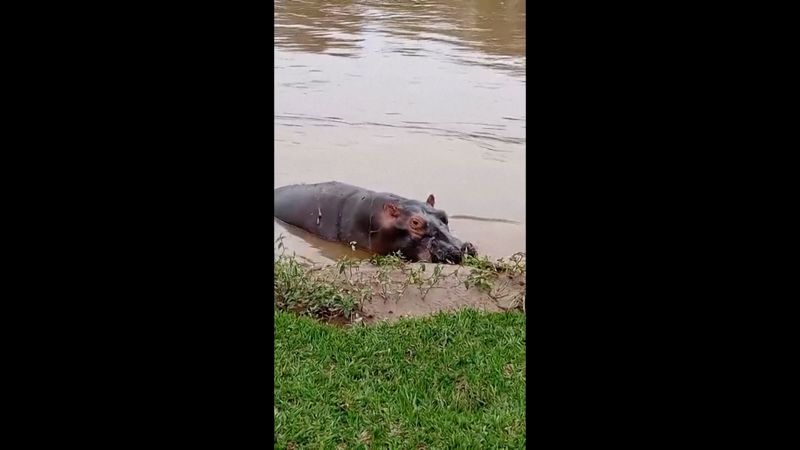In a tragic incident highlighting the impact of disease on wildlife, at least 50 hippos along with other large animals have succumbed to anthrax poisoning in the eastern region of the Democratic Republic of Congo, specifically within Virunga National Park. This catastrophic event has been recently reported by the head of the park, Emmanuel De Merode, and has led to a gruesome sight of deceased animals found floating in the Ishasha River, a significant waterway that contributes to one of Africa’s prominent lakes.
The immediate cause of this sudden outbreak of wildlife deaths remains unclear. Tests conducted have confirmed anthrax poisoning, and it is worth noting that buffalo within the park have also been affected. Images circulating from the park depict the hippos lying motionless in the river or temporarily trapped among riverbank foliage, accentuating the severe impact this poisoning has on species that are already vulnerable due to historical threats such as poaching and habitat loss.
For several decades, Virunga National Park has made considerable efforts to rehabilitate its hippo population, which drastically dwindled from over 20,000 to merely a few hundred by the year 2006, primarily due to extensive poaching and the ravages of war. As a result of these conservation efforts, the park now hosts around 1,200 hippos, making the recent loss particularly significant.
The initial signs of concern arose around five days prior to the report when park guards began to observe dead animals emerging along the river’s banks, which also marks the border between the Democratic Republic of Congo and Uganda. This area has had a tumultuous history influenced by rebel activity, complicating not only conservation efforts but also the response to this sudden outbreak.
Anthrax, recognizable as a serious disease, is commonly caused by bacteria found throughout soil environments. Wild animals can contract this illness by inhaling spores present in contaminated soil, vegetation, or water sources. Thus, the residents living near the park have been cautioned against interactions with wildlife in the area, with advisories from the Congolese Institute for Nature Conservation recommending precautionary measures such as boiling local water sources before consumption.
In assessing the situation, Director De Merode has reported that a team is actively working on-site to extract the deceased hippos from the water and bury them. However, operations face significant hindrances due to a lack of convenient access to the area and necessary equipment, such as excavators needed for proper burial. The challenge in dealing with the carcasses aims to limit the spread of the disease; De Merode emphasized the use of caustic soda to assist in the burial process.
The grim situation is not limited to just the river itself; reports from the nearby Lake Edward indicate that locals have spotted more dead hippopotamuses floating in the waters—over 25 bodies reported from areas like Kagezi to Nyakakoma, as stated by Thomas Kambale, a local leader.
Virunga National Park is no ordinary protected area; it embodies a vast landscape filled with deep forests, volcanic formations, and glaciers, and it is renowned for hosting an unparalleled diversity of species. The ecological richness of the park is further compounded by its stratified history, as it has long been ensnared in the turbulence of militia activities stemming from civil conflicts that erupted around the early 2000s. As conservationists grapple with the present crisis, the haunting specter of lost wildlife looms large over the park’s efforts to restore and protect its biodiversity.












